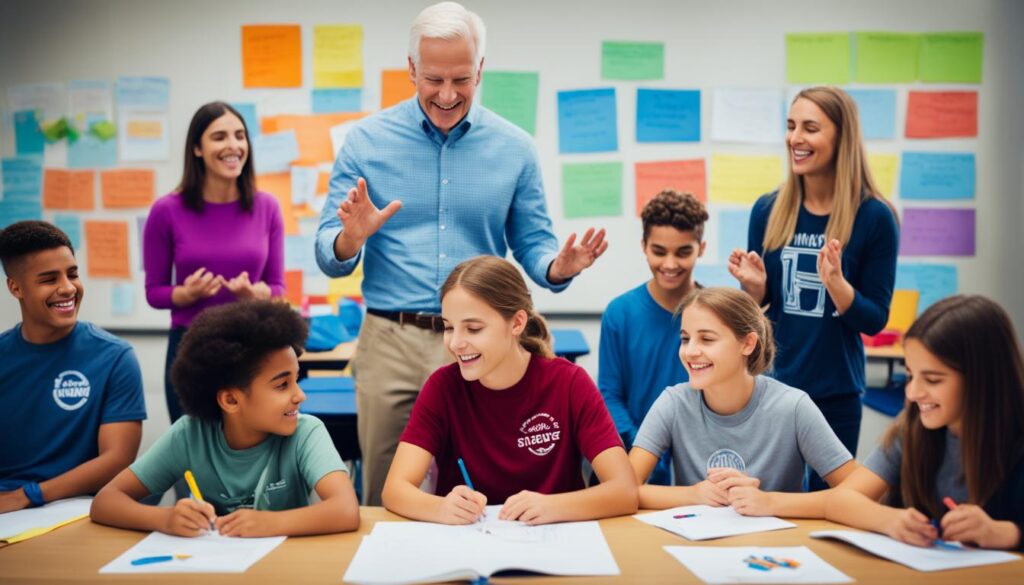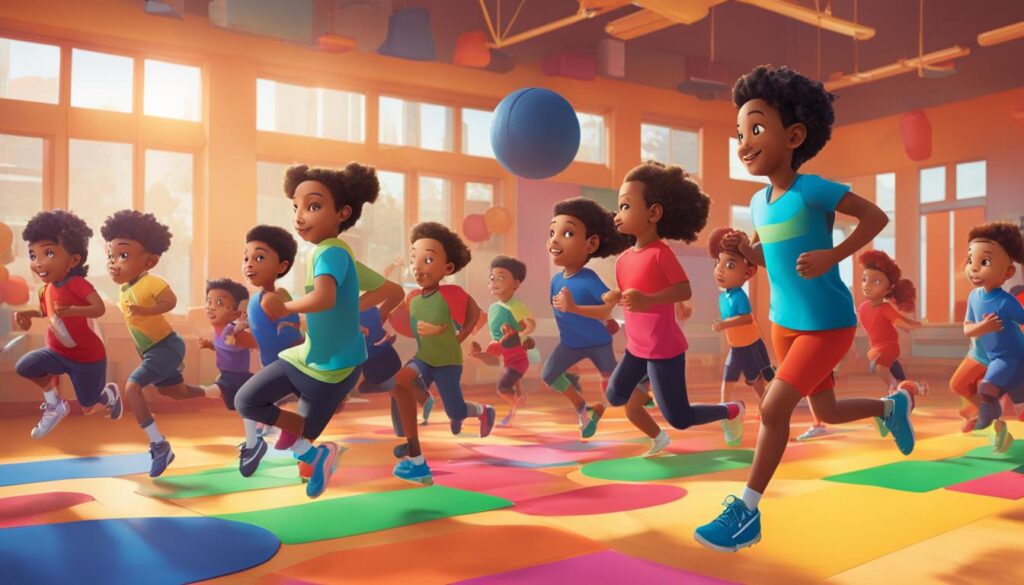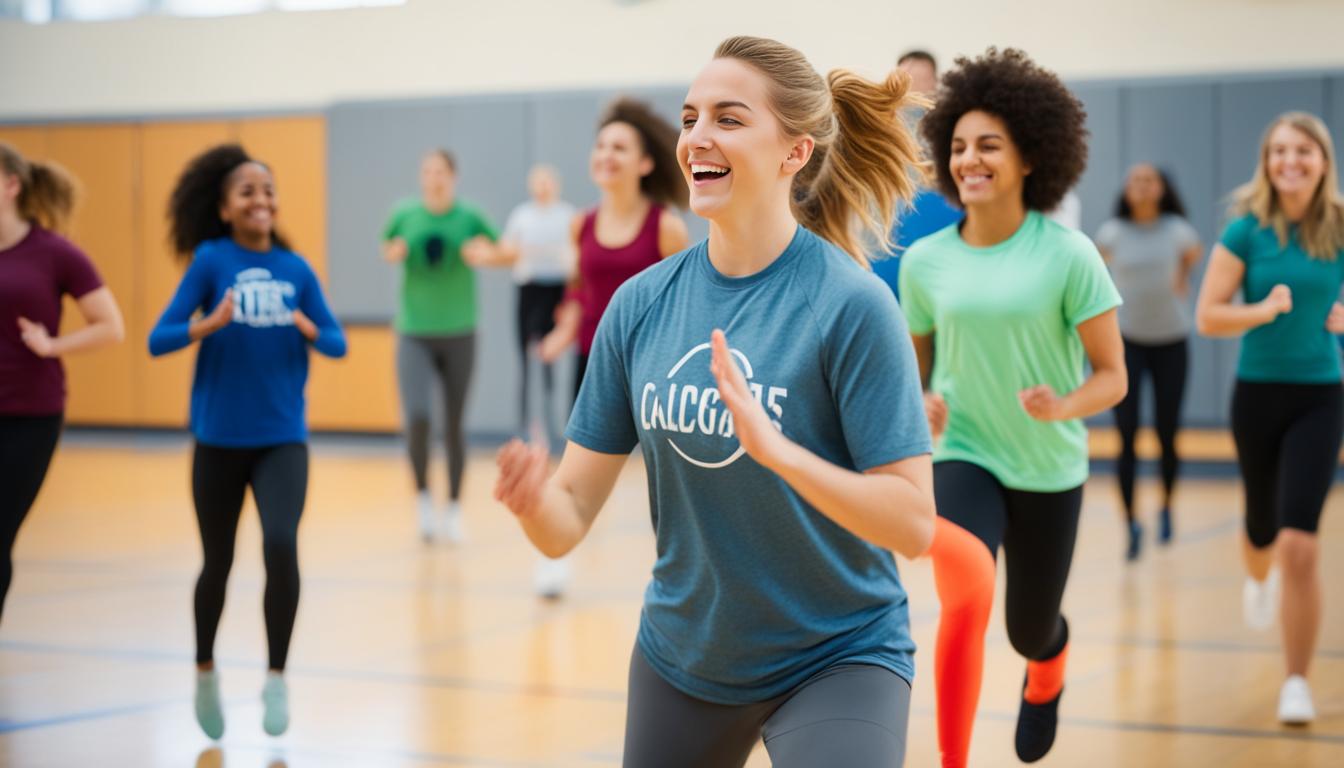Do you believe that schools have the power to transform the lives of young individuals?
At Canada Global Academy, we believe that empowering school wellness programs for youth is key to creating a healthy and supportive learning environment. These programs not only promote physical and mental well-being but also foster lifelong habits that contribute to overall wellness.
Join us as we explore the essential components of school wellness initiatives and how they promote the well-being of students. Discover innovative approaches, evidence-based practices, and resources that can help schools become centers of empowerment for our youth.
Ready to revolutionize your school’s wellness program? Explore how Canada Global Academy’s School Partnership Program is leading the way in empowering youth through wellness. Visit canadaglobalacademy.com/school-partnership-program to learn more.
Contents
- 1 The Importance of Physical Education
- 2 Nurturing Healthy Eating Habits in Schools
- 3 The Role of Sleep in Academic Success
- 4 Teaching Inclusive Sexuality Education
- 5 Exploring Outdoor Education
- 6 Embedding Social-Emotional Skills Into Academics
- 7 Healthy Body, Healthy Mind: Nutrition and Academics
- 8 Emphasizing Physical Literacy in Health Education
- 9 Championing Comprehensive School Health
- 10 Adapting Curriculum to Diverse Learning Styles
- 11 FAQ
- 11.1 What are school wellness programs for youth?
- 11.2 What components are included in school wellness programs?
- 11.3 How can schools partner with Canada Global Academy for school wellness?
- 11.4 What is the role of physical education in youth development?
- 11.5 How does nutrition education contribute to student well-being?
- 11.6 Why is adequate sleep important for students?
- 11.7 Why is inclusive sexuality education important in schools?
- 11.8 How does outdoor education benefit students?
- 11.9 What are social-emotional skills and why are they important?
- 11.10 How does nutrition impact academic performance?
- 11.11 What is physical literacy and why is it important?
- 11.12 How can schools champion comprehensive school health?
- 11.13 How can schools accommodate diverse learning styles?
- 12 Source Links
Key Takeaways:
- School wellness programs empower youth to make healthy choices and develop lifelong habits that contribute to their overall wellness.
- These programs may include physical education, nutrition education, sleep awareness, inclusive sexuality education, outdoor education, and social-emotional skills development.
- Canada Global Academy’s School Partnership Program offers innovative and effective approaches to school wellness, providing schools with evidence-based practices and strategies.
- Physical education plays a crucial role in youth development, promoting physical activity, motor skills development, and overall well-being.
- Schools can nurture healthy eating habits by promoting nutrition education and implementing school lunch programs.
The Importance of Physical Education
Physical education plays a crucial role in youth development and overall wellness. It provides students with opportunities to engage in physical activity, develop motor skills, improve physical fitness, and gain knowledge about the importance of a healthy and active lifestyle.
Physical education classes typically include activities such as sports, games, exercises, and fitness tests. These classes not only promote physical fitness but also contribute to the development of important life skills such as teamwork, leadership, and good sportsmanship.
Research has shown that the benefits of physical education extend beyond physical health. Regular physical activity has been found to enhance academic performance, cognitive function, and mental well-being. By incorporating quality physical education programs into their curriculum, schools can ensure that students have access to these valuable learning experiences.
| Benefits of Physical Education | Promoting Physical Activity | Physical Health and Academic Performance |
|---|---|---|
| Develops motor skills | Encourages students to be physically active | Enhances cognitive function |
| Improves physical fitness | Teaches the importance of a healthy lifestyle | Boosts academic performance |
| Fosters development of life skills like teamwork and leadership | Instills a love for physical activity | Promotes mental well-being |
Nurturing Healthy Eating Habits in Schools

Building a Culture of Healthy Eating in Schools
Schools play a significant role in nurturing healthy eating habits among students. By promoting nutrition education, implementing school lunch programs, and creating a healthy school environment, schools can help students develop lifelong healthy eating habits.
Nutrition education is an important component of building a culture of healthy eating in schools. By teaching students about the importance of balanced meals, the benefits of fruits and vegetables, and the impact of food choices on health, schools can empower students to make informed food decisions.
School lunch programs also play a crucial role in promoting healthy eating habits. Schools should prioritize providing nutritious and appealing meals that meet dietary guidelines. By offering a variety of healthy options and involving students in menu planning, schools can ensure that students have access to nutritious meals.
In addition to nutrition education and school lunch programs, schools can create a healthy school environment that supports healthy eating habits. This can be achieved through the implementation of school food policies that promote nutritious snacks and beverages and restrict the availability of unhealthy options. School gardens and farm-to-school programs can also be integrated into the curriculum to provide hands-on learning experiences and encourage students to connect with nature and food sources.
Cooking classes and nutrition curriculum can further enhance students’ food literacy and cooking skills. By teaching students essential cooking skills and providing them with the knowledge and confidence to prepare healthy meals, schools can empower students to make healthier food choices and develop lifelong skills for maintaining a healthy diet.
Overall, nurturing healthy eating habits in schools involves a comprehensive approach that includes nutrition education, school lunch programs, a healthy school environment, and hands-on learning experiences. By implementing these strategies, schools can promote not only physical health but also the overall well-being and academic performance of students.
The Role of Sleep in Academic Success
Creating a Sleep-Friendly Environment in Schools
Adequate sleep is crucial for the academic success and overall well-being of students. Research has shown that lack of sleep and poor sleep quality can have a negative impact on cognitive function, attention, memory, and academic performance. It is essential for schools to prioritize the promotion of healthy sleep habits to support student success.
One way schools can create a sleep-friendly environment is by implementing reasonable school start times. Early start times can disrupt students’ sleep patterns, leading to sleep deprivation and decreased academic performance. By adjusting school start times to allow for sufficient sleep, schools can ensure that students are well-rested and primed for learning.
Sleep education is another vital component in promoting healthy sleep habits among students. By incorporating sleep education into the curriculum, schools can teach students about the importance of sleep hygiene and provide them with strategies for improving sleep quality. This education may include information on creating a conducive sleep environment, developing a consistent sleep schedule, and practicing relaxation techniques before bedtime.
Reducing excessive homework load is another effective way to support healthy sleep habits. Excessive homework can eat into students’ sleep time and add to their stress levels. By implementing reasonable homework policies that prioritize quality over quantity, schools can help alleviate the pressure on students and ensure that they have adequate time for rest and sleep.
In addition, providing quiet spaces in schools where students can rest or take short naps can contribute to better sleep and overall student well-being. These quiet spaces can provide a retreat from the noise and distractions of a busy school day, allowing students to recharge and rejuvenate.
Overall, creating a sleep-friendly environment in schools is crucial for promoting optimal academic performance and supporting the well-being of students. By prioritizing adequate sleep, implementing appropriate school start times, integrating sleep education, reducing homework load, and providing quiet spaces for rest, schools can help students develop healthy sleep habits that will positively impact their academic success and overall quality of life.
Teaching Inclusive Sexuality Education

Creating Safe and Inclusive Spaces for Sexuality Education
Inclusive sexuality education is essential in promoting healthy and respectful relationships, preventing sexual violence, and supporting the well-being of all students. It encompasses a comprehensive approach to provide students with the knowledge, skills, and attitudes they need to navigate the complexities of sexuality and relationships in a responsible and respectful manner.
Schools should prioritize implementing comprehensive sexuality education that covers a wide range of topics, including reproductive health, consent, LGBTQ+ issues, healthy relationships, and sexual violence prevention. By equipping students with accurate and age-appropriate information, schools can empower them to make informed decisions about their own bodies and relationships.
Creating safe and inclusive spaces for sexuality education is crucial to ensure that all students feel respected, valued, and supported. Schools should implement LGBTQ+ inclusive policies that protect the rights and well-being of LGBTQ+ students. Inclusive language and terminology should be used to create an environment that affirms diverse identities and experiences.
Trained educators play a vital role in facilitating open and non-judgmental discussions about sexuality and relationships. By providing professional development opportunities for educators, schools can ensure that they are equipped with the knowledge and skills to create safe and inclusive learning environments.
Safe discussion spaces should be established where students can ask questions, share their experiences, and engage in open dialogue. These spaces should be free from judgment, stigmatization, and discrimination, allowing students to explore their identities and beliefs without fear.
Consent culture should be promoted through comprehensive sexuality education. Students should be educated about the importance of consent, boundaries, and respect in all types of relationships. By fostering a culture of consent, schools contribute to the prevention of sexual violence and the creation of safe and respectful learning environments.
Components of Inclusive Sexuality Education
| Component | Description |
|---|---|
| Reproductive Health | Education about the human body, puberty, contraception, and sexually transmitted infections. |
| Consent Education | Understanding consent, boundaries, and communication in sexual and non-sexual contexts. |
| LGBTQ+ Inclusion | Addressing LGBTQ+ issues and promoting acceptance and inclusion of diverse sexual orientations and gender identities. |
| Healthy Relationships | Exploring the qualities of healthy relationships, communication skills, and conflict resolution. |
| Sexual Violence Prevention | Education on recognizing and preventing sexual violence, supporting survivors, and seeking help. |
Inclusive sexuality education is a powerful tool for empowering students, fostering respect and understanding, and promoting healthy relationships. By creating safe and inclusive spaces for sexuality education, schools play a crucial role in nurturing the well-being and personal development of all students.
To learn more about how Canada Global Academy’s School Partnership Program is revolutionizing schools and promoting inclusive sexuality education, visit the School Partnership Program.
Exploring Outdoor Education

Outdoor education provides students with valuable opportunities to connect with nature, engage in physical activity, and develop essential life skills. Through outdoor activities and experiential learning in natural environments, students can cultivate environmental awareness, foster a sense of connection with nature, and enhance their overall well-being.
Participating in outdoor education programs is not only beneficial for physical fitness but also stimulates creativity, enhances problem-solving skills, and boosts academic engagement. When students have the chance to learn and explore in natural settings, they become more engaged and develop a deeper understanding of the world around them.
Incorporating outdoor education into the curriculum is crucial for providing students with regular opportunities to learn and grow in nature. By connecting with the environment and participating in hands-on learning experiences, students develop a sense of wonder and curiosity, which is essential for nurturing a lifelong love for learning.
Canada Global Academy’s School Partnership Program is at the forefront of revolutionizing schools by incorporating outdoor education into their curriculum. By offering nature-based education and environmental awareness programs, they empower students to connect with nature, foster a love for the environment, and develop problem-solving skills. Learn more about Canada Global Academy’s School Partnership Program here.
Embedding Social-Emotional Skills Into Academics

Integrating Social-Emotional Learning Across the Curriculum
Social-emotional skills are essential for students’ social development, emotional well-being, and academic success. It is vital for schools to prioritize the integration of social-emotional learning (SEL) into all aspects of the curriculum to help students develop self-awareness, self-management, social awareness, relationship skills, and responsible decision-making.
To embed SEL into academics effectively, schools can employ various strategies:
- Mindfulness practices: Incorporating mindfulness activities into daily routines or specific subjects can teach students valuable self-regulation skills, emotional intelligence, and stress management techniques. Mindful breathing exercises, guided meditations, or mindful coloring can promote self-awareness and relaxation.
- Cooperative learning activities: Encourage collaboration and teamwork through cooperative learning strategies. Group projects, discussions, and problem-solving tasks can foster communication, empathy, and relationship skills among students.
- Conflict resolution exercises: Introduce conflict resolution techniques such as active listening, effective communication, and negotiation skills. Classroom discussions or role-playing scenarios can provide students with opportunities to practice resolving conflicts peacefully and developing empathy.
- Empathy development opportunities: Engage students in activities that promote empathy and perspective-taking. Reading and discussing books that explore diverse experiences or participating in community service projects can help students develop a deeper understanding of others’ emotions and experiences.
By intentionally integrating these social-emotional learning strategies into academic instruction, schools create a supportive and inclusive learning environment that nurtures students’ overall well-being. This approach equips students with essential skills that will benefit them throughout their lives, promoting success not only academically but also in their personal and professional relationships.
Explore Canada Global Academy’s School Partnership Program to learn more about how they are revolutionizing schools by integrating social-emotional learning into the curriculum.
Healthy Body, Healthy Mind: Nutrition and Academics

The Link Between Nutrition and Academic Success
Proper nutrition plays a crucial role in supporting cognitive function, brain health, and academic performance in students. Research has shown that specific nutrients, such as omega-3 fatty acids, antioxidants, and complex carbohydrates, can enhance memory, attention, and overall mental performance.
Schools can promote healthy eating habits by providing nutritious meals and snacks, offering breakfast programs, educating students about brain-boosting foods, and encouraging hydration. By prioritizing nutrition and emphasizing the link between healthy eating and academic success, schools can support students’ cognitive development and enhance their learning capabilities.
One example of an innovative approach to nutrition and academic achievement is Canada Global Academy’s School Partnership Program. Through this program, schools can collaborate with Canada Global Academy to implement evidence-based practices and strategies that promote student well-being. Discover more about this program at https://canadaglobalacademy.com/school-partnership-program/
| Nutrients | Benefits | Food Sources |
|---|---|---|
| Omega-3 fatty acids | Enhance memory and cognitive function | Fatty fish (salmon, mackerel), walnuts, flaxseeds |
| Antioxidants | Protect brain health and improve focus | Blueberries, spinach, nuts, dark chocolate |
| Complex carbohydrates | Provide sustained energy and support brain function | Whole grains, beans, fruits, vegetables |
Emphasizing Physical Literacy in Health Education

Physical literacy is a crucial component of a comprehensive health education curriculum. It encompasses the development of fundamental movement skills, physical activity competence, and an understanding of the importance of lifelong physical fitness.
In order to promote physical literacy in students, health education programs should highlight the significance of acquiring and improving motor skills. By incorporating skill-building exercises, physical activity challenges, active play, and sports participation, schools can provide students with the opportunity to develop their motor skills and physical competence.
Engaging in physical activity challenges and skill-building exercises not only enhances motor skill development but also fosters a positive attitude towards exercise and physical fitness. By encouraging active play and sports participation, students can explore a variety of physical activities, discover their interests, and cultivate lifelong habits of staying physically active.
Canada Global Academy’s School Partnership Program recognizes the importance of physical literacy in promoting holistic student development. Through this program, schools can access a comprehensive physical literacy curriculum that supports the development of fundamental movement skills, physical activity competence, and lifelong physical fitness.
To learn more about how Canada Global Academy’s School Partnership Program is revolutionizing schools and empowering students through physical literacy, visit https://canadaglobalacademy.com/school-partnership-program/.
Championing Comprehensive School Health

Creating a holistic approach to school health is paramount to promoting the physical, mental, and social well-being of students. It involves integrating various components, such as health education, health services, a healthy school environment, and partnership collaborations with families and communities.
Schools must develop and implement comprehensive school health policies that address all aspects of student well-being. These policies should foster collaboration among stakeholders and integrate health services within the school setting.
By championing comprehensive school health, schools can create a supportive and nurturing environment that promotes the overall well-being and academic success of students.
Exploring Canada Global Academy’s School Partnership Program is a prime example of how schools can revolutionize their approach to comprehensive school health. This program offers evidence-based practices and strategies to enhance school health promotion. To learn more about how your school can benefit from this program, visit https://canadaglobalacademy.com/school-partnership-program/.
Adapting Curriculum to Diverse Learning Styles
Meeting the needs of diverse learners is a critical aspect of creating an inclusive and effective learning environment in schools. Every student has unique learning styles, abilities, and strengths. Therefore, it is essential for schools to adapt their curriculum and instructional methods to accommodate these diverse needs.
Differentiated instruction is one strategy that schools can implement to address the learning needs of every student. This approach involves tailoring the instruction, assignments, and assessments to meet the individual needs and abilities of each student. By providing varying levels of support and challenge, teachers can ensure that all students are actively engaged and making progress.
Personalized learning is another effective approach that allows students to have more control over their learning process. It involves customizing the curriculum and learning experiences based on students’ interests, goals, and learning preferences. By incorporating technology and flexible learning environments, personalized learning fosters student autonomy and encourages a deeper understanding of the subject matter.
Inclusive education practices also play a crucial role in meeting the needs of diverse learners. Inclusive classrooms embrace diversity and promote a sense of belonging for all students. By creating a supportive learning environment that celebrates differences and encourages collaboration, schools can foster an inclusive culture where each student feels valued and empowered.
By adopting a student-centered approach and utilizing differentiated instruction, personalized learning, and inclusive education practices, schools can ensure that every student receives the support they need to succeed academically and reach their full potential. Embracing the strengths and diversity of each student is not only the right thing to do but also leads to better educational outcomes for all.
Discover how Canada Global Academy’s School Partnership Program is revolutionizing schools by empowering them to provide personalized and inclusive education. Take your school to the next level at canadaglobalacademy.com/school-partnership-program.
FAQ
What are school wellness programs for youth?
School wellness programs for youth are comprehensive initiatives implemented in schools to promote the physical, mental, and emotional well-being of young individuals. These programs aim to empower youth to make healthy choices and develop lifelong habits that contribute to their overall wellness.
What components are included in school wellness programs?
School wellness programs may include various components such as physical education, nutrition education, sleep awareness, inclusive sexuality education, outdoor education, and social-emotional skills development. These components work together to provide students with the knowledge, skills, and resources they need to lead healthy and fulfilling lives.
How can schools partner with Canada Global Academy for school wellness?
Schools can collaborate with Canada Global Academy through their School Partnership Program to implement evidence-based practices and strategies that promote student well-being. To learn more about this program, you can visit their website at https://canadaglobalacademy.com/school-partnership-program/.
What is the role of physical education in youth development?
Physical education plays a crucial role in youth development by providing students with opportunities to engage in physical activity, develop motor skills, improve physical fitness, and gain knowledge about the importance of a healthy and active lifestyle. It also promotes the development of important life skills such as teamwork, leadership, and good sportsmanship.
How does nutrition education contribute to student well-being?
Nutrition education in schools helps students develop healthy eating habits by teaching them about the importance of balanced meals, the benefits of fruits and vegetables, and the impact of food choices on health. By promoting nutrition education, implementing school lunch programs, and creating a healthy school environment, schools can support students in developing lifelong healthy eating habits.
Why is adequate sleep important for students?
Adequate sleep is crucial for academic success and overall well-being in students. Lack of sleep and poor sleep quality can negatively impact cognitive function, attention, memory, and academic performance. Schools can promote healthy sleep habits by implementing policies such as reasonable school start times, reducing excessive homework assignments, and providing quiet spaces for students to rest or take short naps.
Why is inclusive sexuality education important in schools?
Inclusive sexuality education is essential in promoting healthy and respectful relationships, preventing sexual violence, and supporting the well-being of all students. Schools should provide comprehensive sexuality education that covers topics such as reproductive health, consent, LGBTQ+ issues, healthy relationships, and sexual violence prevention. Creating safe and inclusive spaces for sexuality education and using inclusive language are important aspects of promoting inclusive sexuality education in schools.
How does outdoor education benefit students?
Outdoor education provides students with opportunities to connect with nature, engage in physical activity, and develop essential life skills. Participating in outdoor activities and experiential learning in natural environments promotes environmental awareness, fosters a sense of connection with nature, and enhances students’ overall well-being. Outdoor education can also improve physical fitness, stimulate creativity, enhance problem-solving skills, and boost academic engagement.
What are social-emotional skills and why are they important?
Social-emotional skills are essential for students’ social development, emotional well-being, and academic success. Schools should prioritize the integration of social-emotional learning (SEL) into all aspects of the curriculum to help students develop self-awareness, self-management, social awareness, relationship skills, and responsible decision-making. By intentionally teaching and reinforcing social-emotional skills, schools can create a supportive and inclusive learning environment that nurtures students’ overall well-being.
How does nutrition impact academic performance?
Proper nutrition plays a crucial role in supporting cognitive function, brain health, and academic performance in students. Research has shown that specific nutrients, such as omega-3 fatty acids, antioxidants, and complex carbohydrates, can enhance memory, attention, and overall mental performance. Schools can promote healthy eating habits by providing nutritious meals and snacks, educating students about brain-boosting foods, and emphasizing the link between healthy eating and academic success.
What is physical literacy and why is it important?
Physical literacy refers to the development of fundamental movement skills, physical activity competence, and an understanding of the importance of lifelong physical fitness. Health education programs should emphasize the importance of physical literacy and provide opportunities for students to develop and improve their motor skills. By promoting physical literacy, schools can empower students to engage in a variety of physical activities, develop a positive attitude towards exercise, and maintain a lifelong commitment to physical fitness.
How can schools champion comprehensive school health?
Schools can champion comprehensive school health by developing and implementing school health policies that address all aspects of student well-being, foster collaboration between stakeholders, and integrate health services within the school setting. A multi-component approach that includes health education, health services, a healthy school environment, and partnerships with families and communities is crucial for creating a holistic approach to school health.
How can schools accommodate diverse learning styles?
Schools can accommodate diverse learning styles by implementing differentiated instruction strategies, personalized learning approaches, and inclusive education practices. Flexible learning environments, assistive technology, and individualized instruction can support diverse learners in accessing and engaging with the curriculum. Adopting a student-centered approach and embracing the strengths and diversity of each student are key in empowering all students to succeed academically and reach their full potential.
Source Links

Education Disruptor proudly collaborates with leading innovators in the education sector who share our passion for reshaping K12 education. We extend our sincere gratitude to the following organizations for their support. Ethos Education in collaboration with Canada Global Academy who are the exclusive authorized provider of the 3rd globally ranked Ontario Ministry of Education‘s renowned K12 curriculum and Digital Learning Platform outside of Canada.
Through their School Partnership Program, they empower schools worldwide to attain Canadian Accreditation, providing the opportunity to establish themselves as Canadian Accredited schools. Additionally, home-based businesses can run their own Canadian Accredited Micro-School. Contact them today to learn more!


